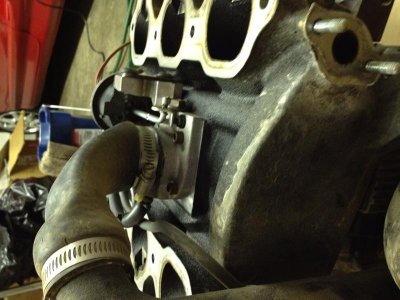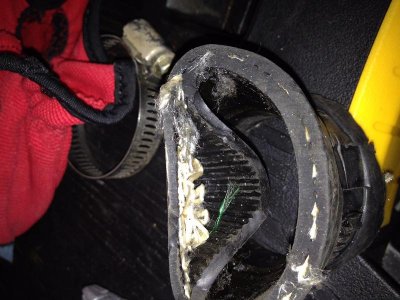I'm cross posting here out of the hope that someone knowledgeable can help me, since I think the issue relates to the CTSC.
http://www.nsxprime.com/forum/showpost.php?p=1840389
My car has an occasional rich stumbling issue on startup. It seems to be related to a slipping belt and the more I think about it, it must be slipping on the SC and somehow starving the system of air. I would have thought that even without the SC spinning, the bypass valve would let air be drawn through the intake (in reverse of the purpose of that valve). Is that incorrect?
Does it make sense that a slipping belt at idle would cause rich running (10:1 AFR)?
To clean the bypass valve, do you think that I could do so through the intake plenum, by removing only the blower itself and not the full intake assembly? I have the original intake, with a welded top plate. My thought was that I might spray some carb cleaner into the bypass valve.
Anyone know the details of the valve in case I want to replace it?
Do you agree that it is unlikely the belt is slipping on the alternator? And that if I have a new battery and see 14V at idle (even when stumbling), that the alternator seems to be working okay?
http://www.nsxprime.com/forum/showpost.php?p=1840389
My car has an occasional rich stumbling issue on startup. It seems to be related to a slipping belt and the more I think about it, it must be slipping on the SC and somehow starving the system of air. I would have thought that even without the SC spinning, the bypass valve would let air be drawn through the intake (in reverse of the purpose of that valve). Is that incorrect?
Does it make sense that a slipping belt at idle would cause rich running (10:1 AFR)?
To clean the bypass valve, do you think that I could do so through the intake plenum, by removing only the blower itself and not the full intake assembly? I have the original intake, with a welded top plate. My thought was that I might spray some carb cleaner into the bypass valve.
Anyone know the details of the valve in case I want to replace it?
Do you agree that it is unlikely the belt is slipping on the alternator? And that if I have a new battery and see 14V at idle (even when stumbling), that the alternator seems to be working okay?




